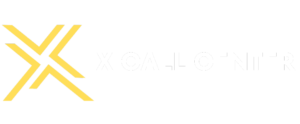
In the fast-paced world of call centers, success is measured not only by the volume of calls handled but by the quality of service provided. Call center managers play a crucial role in ensuring the efficiency and effectiveness of their teams. To achieve this, it’s essential to monitor key performance metrics that reflect the overall health of the call center. In this article, we’ll delve into the top 10 call center metrics that every manager should diligently monitor for sustained success.
1. First Call Resolution (FCR)
First Call Resolution is a critical metric that measures the percentage of customer issues resolved during the first interaction. A high FCR not only indicates efficient problem-solving but also contributes to overall customer satisfaction and loyalty.
2. Average Handling Time (AHT)
Average Handling Time represents the average duration an agent spends on a call, including talk time and any follow-up activities. Monitoring AHT helps in optimizing workflow efficiency without compromising the quality of customer interactions.
3. Service Level
Service Level is a measure of the percentage of calls answered within a specified time frame. Commonly expressed as a percentage (e.g., 80% of calls answered within 20 seconds), maintaining a healthy service level ensures that customers receive timely assistance.

4. Customer Satisfaction (CSAT)
Customer Satisfaction, often measured through post-call surveys, gauges the level of satisfaction customers have with the service provided. Regularly monitoring CSAT scores helps identify areas for improvement and ensures continuous enhancement of the customer experience.
5. Abandonment Rate
Abandonment Rate reflects the percentage of calls that customers abandon before reaching an agent. High abandonment rates may indicate issues with call volume management or long wait times, highlighting areas that require attention.
6. Occupancy Rate
Occupancy Rate measures the percentage of time agents spend actively handling customer interactions. Balancing a healthy occupancy rate ensures agents are productive without experiencing burnout or compromising service quality.
7. Quality Assurance (QA) Scores
Quality Assurance Scores are determined through evaluations of recorded calls. Regular monitoring of QA scores helps assess agent performance, adherence to scripts and procedures, and the overall quality of customer interactions.
8. Schedule Adherence
Schedule Adherence measures how closely agents adhere to their assigned work schedules. Deviations from schedules can impact service levels and overall operational efficiency, making this metric vital for workforce management.

9. Agent Turnover Rate
Agent Turnover Rate reflects the percentage of agents who leave the call center within a specified time period. High turnover rates can negatively impact team morale and customer service quality, emphasizing the importance of retention strategies.
10. Net Promoter Score (NPS)
Net Promoter Score is an indicator of customer loyalty and willingness to recommend the company to others. Regularly assessing NPS provides insights into long-term customer satisfaction and the likelihood of positive word-of-mouth referrals.
Conclusion: A Holistic Approach to Call Center Success
Effective call center management requires a holistic approach, and monitoring these top 10 metrics provides managers with a comprehensive view of their center’s performance. By balancing efficiency metrics with indicators of customer satisfaction and agent well-being, managers can implement data-driven strategies that foster long-term success in the ever-evolving landscape of customer service.
Leave a Reply
